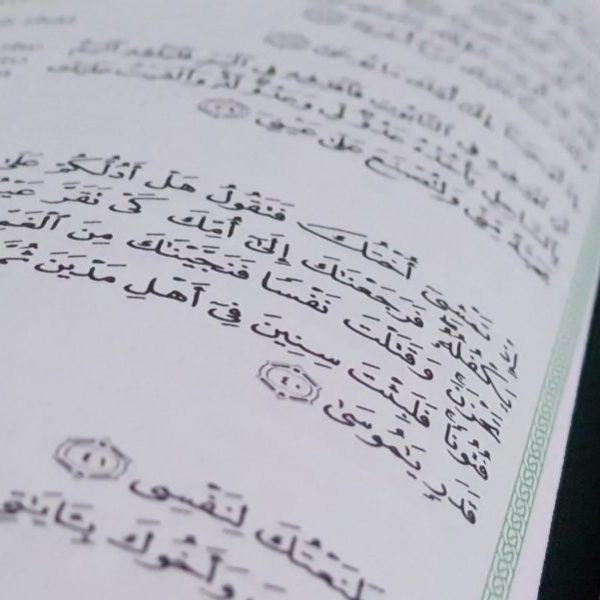Leila Ahmed and Women’s Voices in Islam
What does it mean for a Muslim woman to wear a veil? What is the role of women in Islam? What is the relationship between culture and faith? Leila Ahmed, an author and professor at Harvard Divinity School, investigates these topics most recently in A Quiet Revolution: The Veil’s Resurgence, from the Middle East to America, for which she won the 2013 Grawemeyer Award in Religion. In her 1992 book, Women and Gender in Islam, we find Ahmed’s foundational text, in which she combines history, cultural analysis, and religious insight into the under-studied and frequently misunderstood topic of the relationship between womanhood and Islam.
 In order to unpack this topic, Ahmed explores different strains of influence on the culture into which Islam was born. Deciphering women’s roles from a distant place in history is not a simple task, but Ahmed deftly handles legal and religious material in a nuanced way. She examines the varying legal and economic independence of women in the cultural groups that played a role in the religion’s early social formation, from property ownership to marriage practices. As Ahmed explains, “The type of marriage that Islam legitimized was, like its monotheism, deeply consonant with the sociocultural systems already in place throughout the Middle East.” In looking at this historically, Ahmed helps to tease out the complicated social and political aspects from the ethical and religious tenants of the faith.
In order to unpack this topic, Ahmed explores different strains of influence on the culture into which Islam was born. Deciphering women’s roles from a distant place in history is not a simple task, but Ahmed deftly handles legal and religious material in a nuanced way. She examines the varying legal and economic independence of women in the cultural groups that played a role in the religion’s early social formation, from property ownership to marriage practices. As Ahmed explains, “The type of marriage that Islam legitimized was, like its monotheism, deeply consonant with the sociocultural systems already in place throughout the Middle East.” In looking at this historically, Ahmed helps to tease out the complicated social and political aspects from the ethical and religious tenants of the faith.
What are the ethical and religious ideals of Islam when it comes to women? Ahmed explores how believers have found in Islam’s holy texts a deep egalitarianism that upholds the validity of women’s spirituality alongside that of men. She quotes from the Quran, noting especially that faithful women and men are addressed in the same breath:
“For Muslim men and women, —
For believing men and women,
For devout men and women …
Engage much in God’s praise, —
For them has God prepared
Forgiveness and a great reward.” (Sura 33:35)
As we see in the passage from the Quran, Islamic history hasn’t had one monolithic message to women. “There appear, therefore,” Ahmed explains on early Islamic history, “to be two distinct voices within Islam, and two competing understandings of gender, one expressed in pragmatic ulations for society, the other in the articulation of an ethical vision.”.
 By untangling some of the political and spiritual elements of Islam, Ahmed sheds light on what female followers of Islam may actually experience versus what someone outside might assume. “The unmistakable presence of ethical egalitarianism,” she writes, “explains why Muslim women frequently insist, often inexplicably to non-Muslims, that Islam is not sexist. They hear and read in its sacred text, justly and legitimately, a different message from that heard by the makers and enforcers of orthodox, androcentric Islam.”
By untangling some of the political and spiritual elements of Islam, Ahmed sheds light on what female followers of Islam may actually experience versus what someone outside might assume. “The unmistakable presence of ethical egalitarianism,” she writes, “explains why Muslim women frequently insist, often inexplicably to non-Muslims, that Islam is not sexist. They hear and read in its sacred text, justly and legitimately, a different message from that heard by the makers and enforcers of orthodox, androcentric Islam.”
This fascinating issue is made even more complicated by the interaction between Islam and the Western world. Ahmed concludes her book by exploring how feminism and Islam can be caught up in the relationship between Western and Muslim cultures (and cultures within them). One danger, particularly in the scholarly and political sphere, is the temptation to broadly apply a strict Western notion of the role of women. As Ahmed explains, this is implicated in prejudice and misunderstanding, and it can be used to justify antipathy to Muslims or Arab people. Women and Gender in Islam illuminates how Muslim women can and have negotiated their own voice from their own context of faith.




